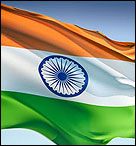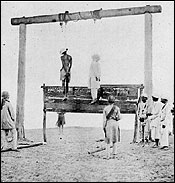 |
| a home away from home |
| HOME FEEDBACK TELL A FRIEND WEB SITE DESIGN CAREER WITH US CONTACT US |
![]() Festivals
Festivals
![]() Durga Puja
Durga Puja
![]() Associations
Associations
![]() Learn Bangla
Learn Bangla
![]() Beng. Marriage
Beng. Marriage
![]() Art & Craft
Art & Craft
![]() Great Indians
Great Indians
![]() Beauty Care
Beauty Care
![]() Recipe
Recipe
![]() Astrology
Astrology
![]() Beng. Section
Beng. Section
![]() Bengal
Bengal
![]() Calcutta
Calcutta
![]() Beng. Calendar
Beng. Calendar
![]() Wallpapers
Wallpapers
![]() Movie
Movie
![]() Music
Music
![]() E-Card
E-Card
![]() Shopping
Shopping
![]() E-Puja Room
E-Puja Room
![]() News
News
![]() E-mail
E-mail
![]() Month's Events
Month's Events
![]() Weather
Weather
![]() Chat
Chat
![]() Travel
Travel
![]() Join Us
Join Us
![]() Advertise
Advertise
![]() Website links
Website links
![]() Link to us
Link to us
![]() Guest Corner
Guest Corner
![]() Services
Services
![]() WebSite Design
WebSite Design

India has a long history of freedom struggle. India was never an independent sovereign; rather it was composed of several independent princely states who exercised control over their conquered territories in the Indian sub-continent. It was not until the British traders who came to this land, conquered and consolidated these states to form the British-Indian colony, that the country got its distinct geographical identity.
Europeans
on Indian Soil
The
European presence in India dates back to the 15th century. Vasco da Gama's
discovery of a new sea route to India in 1498 paved the way for direct
Indo-European commerce. Soon the Portuguese set up trading-posts in Goa,
Diu Daman and Bombay. The next to arrive were the Dutch, the British and
then came the French.
Decline
of the Mughals and the advent of the British
In
the latter part of 17th century when the Mughal Empire began to collapse,
it paved the way for the emergence of new regional states in India. In
the contest for supremacy among all the European countries that came to
India to establish colonies, the English emerged 'victors'. The British,
who had initially come for trade, gradually took over the total administration
of the country. Their rule was marked by the conquests at the battlefields
of Plassey in 1757 where British East India Company, led by Robert Clive,
defeated the last Nawab of Bengal, Nawab Siraj-ud-Daulha and then the
Battle of Buxar in 1764. After this win the Company acquired the civil
rights of administration in Bengal from the Mughal Emperor Shah Alam II.
This marked the beginning of the Company’s formal rule, which engulfed
eventually most of India and extinguished the Moghul rule and dynasty
itself in a century.
East
India Company and its ruling policy

British Company's high handed rule resulted in the Rebellion of 1857-58 (popularly known as the Sepoy Mutiny). It sought to reinstate Indian supremacy, but due to lack of co-ordination among the leaders, the rebellion lost its importance and was eventually crushed. In the later years successive campaigns led by several other freedom fighters in the country had the effect of driving the British out of India in 1947 finally.
GREAT INDIANS || BENGALI SECTION || BENGALI MARRIAGE || BABY'S NAME || WALLPAPER || BENGAL || WEATHER || TRAVEL
MOBILE WALLPAPER || E-CARD || MOVIE || WEBSITE LINKS || ASSOCIATIONS || SHOPPING || ASTROLOGY || MUSIC || BEAUTY CARE
TIGER || NEWS || GUEST CORNER || FEEDBACK || LINK TO US || FOR ADVERTISING || SERVICES || CONTACT || BENGALI CALENDAR
Graphics, Sound or content copied or produced in part or whole in any media will be illegal.
Persons or websites caught using our material will be penalized.
Privacy Statement || Copyright
Copyright ©1999-2014 BANGALINET.COM